My dictionary looks like this(Dictionary within a dictionary):
{'0': {
'chosen_unit': <Unit: Kg>,
'cost': Decimal('10.0000'),
'unit__name_abbrev': u'G',
'supplier__supplier': u"Steve's Meat Locker",
'price': Decimal('5.00'),
'supplier__address': u'No\r\naddress here',
'chosen_unit_amount': u'2',
'city__name': u'Joburg, Central',
'supplier__phone_number': u'02299944444',
'supplier__website': None,
'supplier__price_list': u'',
'supplier__email': u'ss.sss@ssssss.com',
'unit__name': u'Gram',
'name': u'Rump Bone',
}}
Now I'm just trying to display the information on my template but I'm struggling. My code for the template looks like:
{% if landing_dict.ingredients %}
<hr>
{% for ingredient in landing_dict.ingredients %}
{{ ingredient }}
{% endfor %}
<a href="/">Print {{ landing_dict.recipe_name }}</a>
{% else %}
Please search for an ingredient below
{% endif %}
It just shows me '0' on my template?
I also tried:
{% for ingredient in landing_dict.ingredients %}
{{ ingredient.cost }}
{% endfor %}
This doesn't even display a result.
I thought perhaps I need to iterate one level deeper so tried this:
{% if landing_dict.ingredients %}
<hr>
{% for ingredient in landing_dict.ingredients %}
{% for field in ingredient %}
{{ field }}
{% endfor %}
{% endfor %}
<a href="/">Print {{ landing_dict.recipe_name }}</a>
{% else %}
Please search for an ingredient below
{% endif %}
But this doesn't display anything.
What am I doing wrong?
